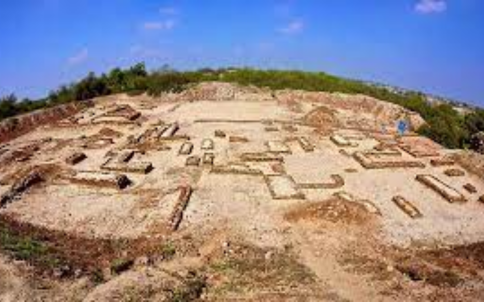Photo writeup: Indus valley civilization excavation
Rajendra singh Baisthakur
Hinduism is older than any major religion in the world. It was known as ‘Arya Dharma’, the religion of the Aryas. (Since the origin of the religion is not known it is also called ‘Sanatana Dharma’, meaning ‘old religion’). Aryans lived near the river Sindhu in Punjab area and gradually spread to North India. Later they moved to South India too lead by sage Agastya. Recent research proved that Aryan migration theory is a lie and clearly established that Aryans are not migrants but are natives of Indian sub-continent. The people who lived East of Sindhu were called ‘Hindus’ by Iranians (who lived on the other side of the Sindhu) as in their Persian language the sound ‘Sa’ is pronounced as ‘Ha’. So Sindhus (people of Sindhu) came to be known as Hindus. The British changed the name of the river Sindhu to ‘Indus’ and thereby Aryans/ Hindus came to be known as Indians. The civilization that existed beside Sindhu is known as ‘Indus Valley Civilization’. It is one of the five ancient civilizations in the world. But today it is the only living ancient civilization. It is obvious that it is based on Hindu culture. In spite of about 700 years of Muslim rule and 300 years of British domination India continues to have its own unique culture.
Also read: Deserving Democracy
Continuous existence of Hinduism for several millennia without a specific godhead, any specific holy book, a prophet, a day, time or place for prayer is a matter of wonder to many. It has spread to many parts of the world from Mexico to Far East. Some religions born in India like Buddhism, Jainism and Sikhism are also based on Hindu philosophy. The philosophy of Hinduism is very complex but there are books like Upanishads written by sages to make it simple for the elite and epics like the Ramayana and the Mahabharata to convey the essence of Hindu way of life to the ordinary men and women. Further the Hindu culture is carried forward for generations in the form of rituals, customs and traditions. Celebrations in temples and activities during festivals in homes are not just ritualistic but are practices for physical and spiritual health.
Also read: “Justice / Dharma”




